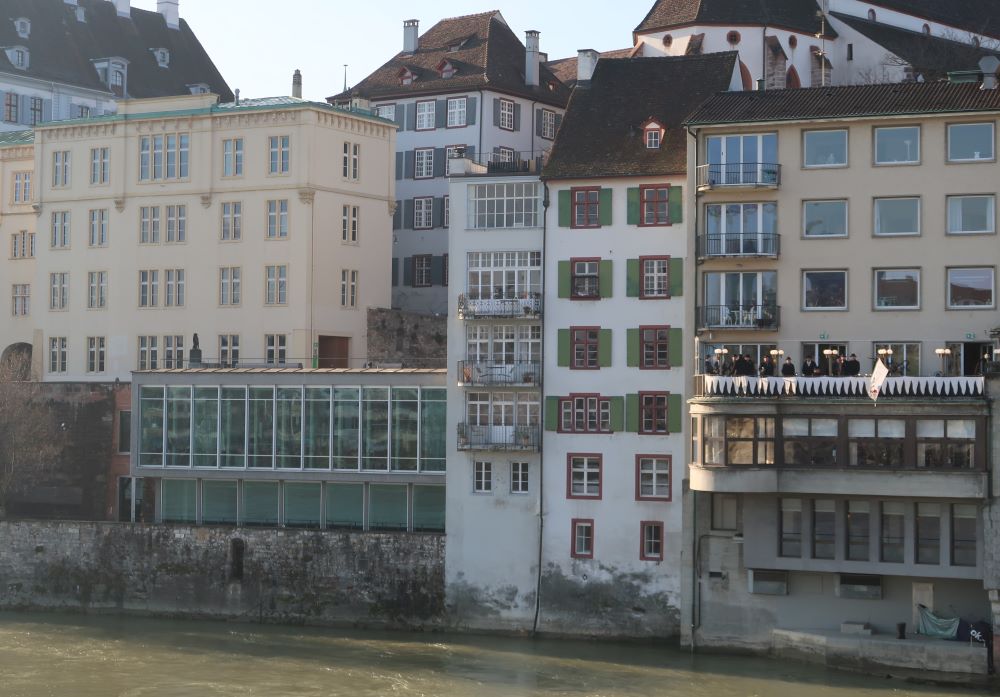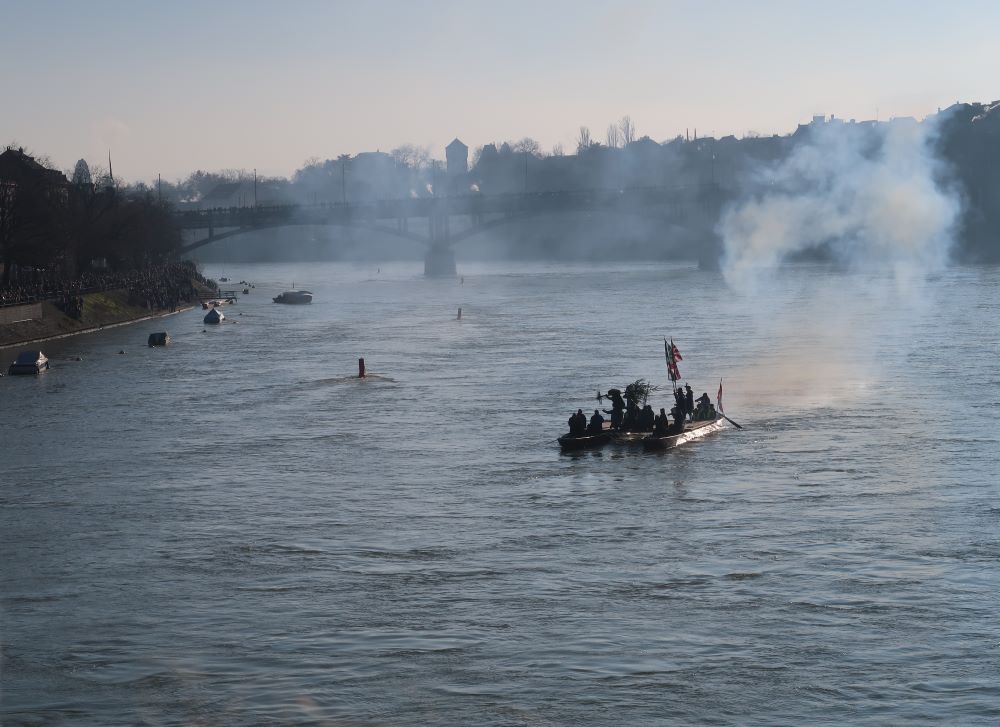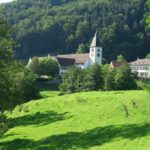The drums and (march) music resemble the Basler Fasnacht. This Kleinbasel tradition has a different origin, however. The Fasnacht takes place from 19 to 21 February this year. The Vogel Gryff tradition will be celebrated on January 20, 2024.
Three centuries-old societies (Ehrengesellschaften) welcome their patrons Vogel Gryff (Bird), Leu (Lion) and Wild Maa (Wild Man) in January.
This tradition goes back to the thirteenth century when Kleinbasel and Grossbasel were two towns on the left and right banks of the Rhine.
The (wooden) Rhine bridge was built in 1225. This bridge connected the two Basels and led to significant growth of trade and economic prosperity in Kleinbasel. Rudolf I of Habsburg granted Kleinbasel city rights in 1285.
Prominent citizens founded various societies: zum Rebhaus and its symbol Leu (1304 mentioned for the first time), zur Hären and the figure Wild Maa (mentioned for the first time in 1384) and zum Greifen and the patron Vogel Gryff (first mentioned in 1409).
The societies represented the interests of the citizens of Kleinbasel. Their members also guarded the city walls. The societies presented their weapons once a year on a march through the city.

Wall Painting in Kleinbasel
The companies organise their parades through Kleinbasel on 13, 20 or 27 January ever since. The three figures, Vogel Gryff, Wild Maa and Leu, present a ritual dance to dignitaries and the citizens of Kleinbasel. They are accompanied by drums, the four Ueli (jesters) and the three flag bearers of the societies. The Members of the societies have a joint meal in the afternoon, the Gryffemähli.
The separation from Grossbasel is strictly maintained in this tradition. The parade never enters Grossbase but halts precisely in the middle of the Mittlere Brücke and the Käppelijoch.
The figures always keep their faces to Kleinbasel and turn their backs to Grossbasel, like figures in Grossbasel stick out their tongues to Kleinbasel. However, the heraldry of the three societies is depicted on the windows in the cathedral Grossbaser.
The societies march through Kleinbasel until late in the evening, accompanied by their drums, Uelis, flag beares, the members of the three societies and citizens of Kleinbasel.
(Source and further information: www.vogel-gryff.ch).

The old costume ( till 2015) of Vogel Gryff. The costume weighs over 40 kilograms. Museum Kleines Klingental


Wall Painting in Kleinbasel


Café/Hotel Merian, Kleinbasel side

The Grossbasel side




Wild Maa and company on the Rhine and the arrival near the Klingental Museum



Leu and Vogel Gryff. The Police wear their traditional Bobby Helmets for this event



The three flags of the Ehrengesellschaften on the bridge, just to the Käppelijoch
















